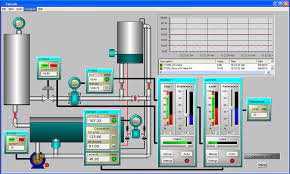Process control instrumentation is a critical aspect of any process or manufacturing operation. It allows continuous monitoring and manipulation of process variables to maintain optimal conditions and produce consistent results. Experts from instrumentation abb explain the four essential functions of process control instrumentation in this blog.
Let’s start with the basics!
Table of Contents
What Is Process Control Instrumentation?
Process control instrumentation (PCI) refers to the tools and devices used to measure, control, and manipulate process variables to achieve desired results. Two of the most widely used process variables are temperature and pressure. For example, in a typical petrochemical manufacturing process, process control instrumentation monitors the temperature of reaction vessels to maintain optimal conditions while preventing upsets like explosions.
Instrumentation and Process Control: Why Are They So Important?
Instrumentation and process control are essential for ensuring the safety of personnel, equipment, and the quality of end products in an industrial process. In addition, instrumentation and process control play a pivotal role in optimizing production by minimizing waste and maximizing efficiency.
The Four Essential Functions of Process Control Instrumentation
Now that we know more about instrumentation and process control, let’s look at the essential functions of process control instrumentation.
Monitoring Process Variables
The first essential function of process control instrumentation is to monitor process variables. This involves continuously measuring the values of key process variables and comparing them to setpoints or desired values. For example, a temperature sensor may be used to monitor the temperature of a reaction vessel. If the temperature exceeds the setpoint, the sensor will send a signal to the controller, which will then take action to bring the temperature back down to the setpoint.
Manipulating Process Variables
The second essential function of process control instrumentation is to manipulate process variables. This involves using devices to control the values of key process variables. For example, in an industrial process, a control valve may be part of a feedback loop system that adjusts the flow of reactants into a reaction vessel. Thus, maintaining optimal flow rates.
Recording Process Data
The next essential function is recording process data. This function involves using devices to record the values of key process variables over time. Recording this data can help troubleshoot non-conformance, optimize production, and improve process safety. For example, a data logger may be used to record the temperature of a reaction vessel over time. This data can then be used to identify trends and help optimize the process.
Display Process Information
Finally, the fourth essential function of process control instrumentation is displaying process information. This involves using devices to display the values of key process variables in real-time. Displaying this information can help operators make informed decisions and take action when necessary. For example, a process control panel may be used to display the flow rate in real-time.
What are the common process variables?
Now that we’ve looked at the essential functions of process control instrumentation, let’s take a more detailed look at some of the most common process variables.
Temperature
Temperature plays a vital role in many industrial processes and can significantly impact the safety of personnel and equipment.
Pressure
A pressure control system is used to maintain the pressure of a process at a safe and optimal level. Devices such as pressure sensors and pressure relief valves are used to monitor and manipulate the pressure of a process.
Level
The level is a measure of the amount of material in a vessel. Using devices such as level sensors, an operator can avoid process upsets and optimize production by monitoring the level of gases, solids, and liquids.
Flow
Flow is a measure of the rate at which material moves through a system. By monitoring the flow of gases, liquids, and solids, an operator can optimize a process using devices such as flow meters.
Common Process Control Systems
Now that we’ve looked at some of the most common process variables, let’s take a more detailed look at some of the most common process control systems.
PID Control
PID, which stands for Proportional-Integral-Derivative control, is the most common process control system. It controls various processes, including temperature, pressure, and flow. PID control systems use feedback to compare the setpoint to the actual value of the process variable. The controller then adjusts the manipulated variable to bring the process back under control.
Process control instrumentation is essential for the safe and efficient operation of processes. It enables operators to manipulate, record, display, and control process variables such as pressure, temperature, level, and flow of materials. By understanding and controlling these variables, operators can optimize production, prevent process upsets, and improve process safety.
